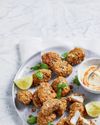
We must be doing something right when it comes to living younger longer. The statistics are dramatic when you compare today’s chances of dying to 50 years ago. If you’re 50 years old today, your chances of dying at that age are the equivalent of someone in their late thirties 50 years ago. If you’re 80 today, your chances of dying at that age are the equivalent of someone in their late sixties 50 years ago. If you’re 90 years of age today, your chances of dying at that age are the equivalent of someone in their early eighties 50 years ago. Put another way, in 1950, the risk of death in the following 12 months for an 85year-old woman in Sweden was 17 per cent. Today it’s 7 per cent. The size of reductions have been similar for men and even people aged over 90. In the US, at age 95, the risk of dying has fallen from 31 per cent to 22 per cent. So why has this happened? There are many reasons, including stopping smoking, but it’s far more than that.
There are a few concepts about living younger longer that are important to get straight up front. The first is to be clear that the aim is to have a body (including your brain) that has fewer kilometres on the clock than your number of birthdays would suggest. In other words, your biological age is less than your years. There are many markers of being biologically older than your calendar age. High blood pressure, high blood sugars and fats, too big a waist circumference, resting pulse rate, exercise tolerance, muscle strength, cognitive impairment and levels of chronic stress and psychological distress are all markers of increased biological age. There are also markers than can be measured in our genes and chromosomes.
This story is from the {{IssueName}} edition of {{MagazineName}}.
Start your 7-day Magzter GOLD free trial to access thousands of curated premium stories, and 9,000+ magazines and newspapers.
Already a subscriber ? Sign In
This story is from the {{IssueName}} edition of {{MagazineName}}.
Start your 7-day Magzter GOLD free trial to access thousands of curated premium stories, and 9,000+ magazines and newspapers.
Already a subscriber? Sign In

How to boost the value of your home
Whether you're looking to sell now or later down the track, it really pays to keep your house up to date.

The magic of manifesting
While it sounds woo-woo, putting your mind to what you want might be the key to turning your dreams into reality.

A quiet killer
Difficult to detect, ovarian cancer is silently taking the lives of women. Here's what you need to know.

Air fryer snacks
The air fryer makes cooking so simple. From healthier versions of fried favourites to baked treats, these easy recipes are made to enjoy!

The billiondollar world of astrology
Astrology is back. Celebrities won't make a move without consulting their charts and everyone knows someone who's retraining as an astrologer. The Weekly investigates the current fascination with the stars.

The shape shifters
Contouring with make-up is a clever hack for instant facial definition.

"I'm a professional baby cuddler!"
When Jenny Summerson’s own children grew up, she looked for something to fill the hole in her life. What she found were babies who needed a little extra TLC.

Princess Catherine THE REALITY OF A NEW NORMAL
After the hardest year of her life and as she finds her footing in a post-treatment world, the dutiful princess could be preparing for her ultimate role- but this time it's on her terms.

Put it in neutral
Far from middle of the road, neutral tones can really add interest and sophistication to your home. Here's how to nail it.

QUEEN OF COMEDY The Marvellous Ms Margolyes
Speaking her truth in a delightfully wicked and candid manner we've come to cherish, British actress Miriam is now telling the world how she has fallen in love with New Zealand.